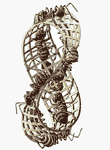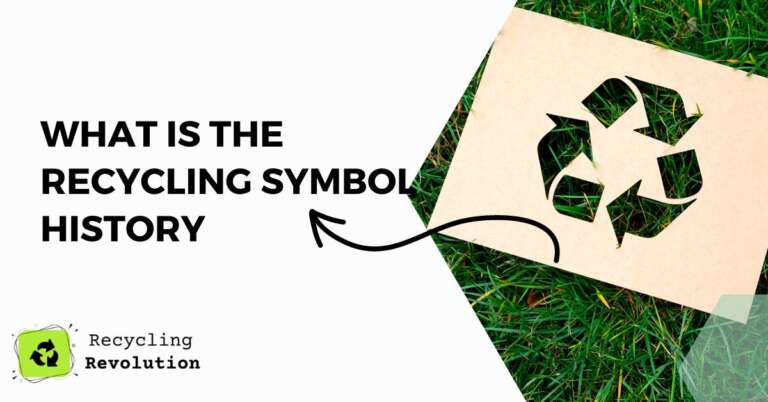When you hear the term recycling, what immediately comes to mind?
Is it, how important recycling is to reduce waste and increase environmental sustainability?
Or, a method to reduce the massive amounts of trash accumulating in landfills all over the world?
If you are anything like me then you probably have been wondering what are the three arrows of the recycling symbol.
It got me wondering one day who was the genius behind the well-known symbol.
What Does It Mean?
The three arrows have been incorporated into everything pertaining to recycling, recyclable, and recycled products.
It is as recognizable as the Golden arches or the “Apple” with the missing bite.
The origins of the three arrows of recycling are rooted in the very first Earth Day in April, 1970.
At this time in American history, there was a growing awareness of environmental conservation that coincided with an already active counter-culture of activists and concerned citizens.
The Container Corporation of American, a paperboard company, was beginning to realize a growing environmental movement.
With an existing recycling track record and Knowing that paper product recycling was an effective method of conserving natural resources, the CCA planned to spread the word and promote awareness.
They sponsored a nationwide art contest for a design that would help identify the company’s products that were manufactured using content that was recycled or recyclable.
The winning symbol would represent the process of recycling paper.
More than 500 young students and activists entered designs into the contest held in the Spring of 1970 in Aspen, Colorado.
After being evaluated by a panel of judges, a winner was declared.
A 23 year old student from the University of Southern California at Los Angeles named Gary Dean Anderson took home the first place prize of a $2500 tuition scholarship.
Gary Dean Anderson grew up in North Las Vegas, Nevada in the 1950’s.
Like many families during this era, Gary’s family lived a thrifty lifestyle having a very recent memory of the Great Depression.
This translated into very little waste and reusing trash for other purposes.
It wasn’t out of environmental concerns, but out of financial concern.
This background was perhaps an influence on Anderson’s continued and growing interest in conserving resources.
Who Designed the Recycling Symbol?
During Gary Dean Anderson’s design process of what eventually became the recycling symbol, he drew heavily on influences from the Mobius Strip made famous by artist, M.C Escher. The Mobius strip can be described as a continuous loop having only one side and one edge.

It is both finite and infinite simultaneously. Anderson created his design completely by hand before the prevalence of computer graphics programs.
During my research on the history of the recycling symbol, I found several articles stating that the Mobius Strip was “chosen” as the universal symbol of recycling.
The fact is however, that while the Mobius Strip was indeed an inspiration, it was Gary Dean Anderson’s brainchild and design that is now synonymous with recycling.

